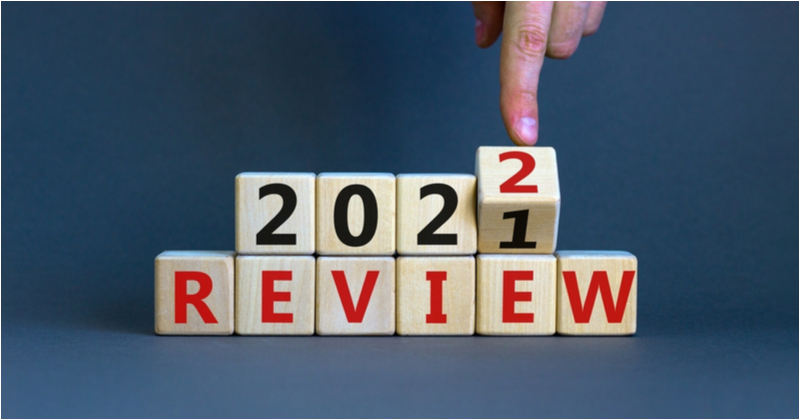While nothing might ever top the pace and rate of change we experienced during the first year of economic nexus in 2018, 2021 was nonetheless a busy year in the world of sales tax. For sure, there was the usual barrage or rate and form changes across the 12,000+ state and local taxing jurisdictions. But it’s also worth taking a moment to see if we can discern any trends in the major changes that happened in 2021 to see what they may portend for the future of sales tax compliance in 2022 and beyond.
Sales and use tax sourcing changes intended to “level the playing field”
Right out the gate in January 2021, the new Illinois sourcing rules kicked in. Determining the proper taxing location in Illinois has always been challenging, and the new rules did not necessarily make things simpler. For sellers that have economic but not physical nexus with Illinois, the change was significant.
Rather than collect state-level Illinois Use Tax only, remote sellers are now obligated to collect state and local Retailers Occupation (sales) Tax based on the rates prevailing at the location of their customer. In-state sellers likewise collect sales tax, but they continue to collect based upon their physical location.
To the extent that both in-state and remote sellers now both collect sales tax, the playing field is somewhat leveled. Things get strange though when you have an in-state seller but a particular sale comes from an out-of-state location. In that case, the seller collects state use tax and no local tax.
A similar change happened in New Mexico as of July 1, 2021. By imposing a new compensating use tax at the local level in all localities, in-state and remote sellers now both collect state and local tax when selling into New Mexico. Before, remote sellers with economic nexus only collected state tax.
Both Illinois and New Mexico are following states like Colorado and Arizona that made similar changes over the past year. There are still a solid handful of states where localities impose use tax at a rate that is either different than the sales tax rate or have no use tax rate at all, most notably Oklahoma and Missouri. It will be interesting to see if either jurisdiction moves to similarly “level the playing field” in 2022 or beyond.
Texas also attempted to make a sourcing change that would have been effective on October 1, 2021, but of a slightly different character. Within those states that have origin-based local sourcing for in-state sales, there is often a concern that local governments and businesses both “game the system” to generate tax in the lowest possible taxing jurisdiction within a state.
With that concern in mind, Texas announced a rule that said a business location cannot be a taxing location for a given transaction if the only thing happening in that location is something occurring through a computer without any human involvement.
Before the new rule took effect, the city of Round Rock initiated legal proceedings against Texas. While those proceedings are working their way through the court system, the rule is enjoined from being enforced. However, should it come to pass, it could present the unique scenario where a phone order (taken by a human) and an internet order processed from the same location could be taxed differently.
Broadening the tax base by taxing digital goods
Maryland enacted legislation that became effective on March 14, 2021, impacting the state’s approach to taxing the digital economy. The bill was originally vetoed in the 2020 legislative session but became effective 30 days after the veto was successfully overridden by the legislature. The bill expanded the definition of “retail sale” to include “digital code” and “digital products.”
Essentially, downloaded and SaaS software became taxable as well as other digital equivalents to tangible property. Colorado passed a similar “digital goods” rule in July, but truth be told the Colorado DOR was already taking the position that digital goods were taxable under existing law.
It wouldn't be surprising to see more states move to tax digital products. Take streaming services for example. Today, 22 states still exempt streaming services. Given the proliferation of streaming entertainment over the last couple of years, we can expect at least a handful of states to move to close that component of their tax gap in the near term.
Maryland also enacted a first-in-the-nation digital advertising tax (DAT). These taxes were a growing trend globally, with the basic premise being that governments wanted their share of the revenue being earned by digital advertisers directing advertising at their citizens. While the Maryland tax is currently mired in litigation, similar taxes were previously considered in Connecticut, the District of Columbia, Indiana, Montana, New York, Texas, and Washington and it’s certainly possible another state may try to bring a similar bill to a vote this year.
Sales tax digitization and modernization
Sales tax prepayments are nothing new, but in April 2021, Massachusetts attempted to take pre-payments to the next level when it enacted its “advance payment” program. Under this new requirement, taxpayers with over $150,000 in cumulative sales tax liability from 2020 were required to make an “advance” payment of any tax collected between the 1st and 21st of the month on the 25th of that same month.
Now, just before the law was to take effect, Massachusetts offered a temporary safe harbor allowing obligated sellers to base their advance payment on 80% of the tax collected in the previous month. Just before the safe harbor expired, Massachusetts changed the rules to make the safe harbor a permanently permissible remittance method.
It’s unclear whether any other states will enact similar advance payment requirements in 2022 or whether Massachusetts will remain an interesting outlier. It’s also possible that some states may once again contemplate “real-time” payment regimes, which seem to have more political appeal than practical benefit. More likely, states will continue to evolve in their utilization of technology in identifying non-compliant taxpayers, validating the accuracy of monthly filings and streamlining the audit process.
As sales and use tax laws continue to evolve, ensure that your clients work with regulatory analysis teams that maintain every rate and rule and that every form is supported. It’s also critical to have a partner that expands its own content scope as its clients evolve - sales and use tax is constantly evolving, so their knowledge should too.
Check out this page to learn about more resources that can help you stay on top of these changes.
.png?width=150&height=63&name=TWRlogo-regmark_blueblack%20(1).png)
.png)










Do you have questions about this article? Email us and let us know > info@woodard.com
Comments: